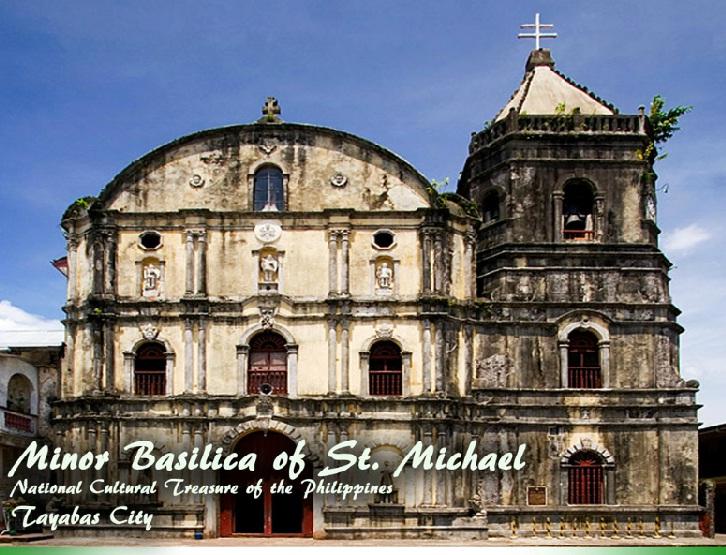
Overview
The province of Quezon is home to an astonishing number of churches, most dating to the late1500s and all of which display the rich religious heritage and marvelous architecture of Quezon Province's distant past. Renowned by even the devout of other regions in the Philippines, these places of worship have continued to inspire and give sanctuary to the faithful for literally hundereds of years.
- St. Michael the Archangel Minor Basilica, Tayabas, Quezon
One of the oldest churches in the century, it was first built in 1585 and repaired in 1590 using nipa and palm. In 1600, they used bricks. The church was destroyed by an earthquake in 1743 and later rebuilt and enlarged in 1856.
- Atimonan Church, Atimonan town proper
This church was first built in 1640 but was burned during an invasion. Rebuilt in 1643, it was partially destroyed by fire. During the Second World War, the whole town including the church was leveled off by bombing. Reconstruction of the church started in 1979.
- Cathedral of San Diego de Alcala, Gumaca town proper
First established in 1582 on its present site, it was transferred to Silangan in the island of Alabat in 1638. It was burned by Dutch forces in 1665; reconstructed and beautified in 1846. It is known as the biggest and oldest Catholic Church in the province of Quezon.
- Church of Saint Louise of Toulouse, Lucban, Quezon
The first church was built in 1593 but was ruined in 1629. The second church was constructed between 1630 and 1640, but was razed by a fire in 1733. The present church was completed in 1738 and its interiors in 1743. It was partly destroyed during the Second World War and the Philippine Historical Conservation Society completed its renovation in 1966. The church is surrounded by gardens and grottos, and are surrounded by old stone walls regarded locally as the “quince-quince.”
- Munting Malaguinoan Island, Malaguinoan, Burdeos, Quezon
In the smaller of the two Malaguinoan Islands, an image of the Blessed Virgin Mary stands. The image of the kneeling Mary was found out of a growing stone. Every boat that passes near the island pays homage to the image to have a safe journey.
- Our Lady of Sorrows Shrine, Dolores town proper, Quezon
The famous “pangkuan” is held every Friday of the week. Many people from the neighboring towns come to Dolores to attend the mass in honor of the Birhen Dolorosa. It is also known for the yearly “Viernes de Dolores” which falls either in March or April. It features the holy Mass and a “Turumba”, a dance praising the town’s patron saint. After the procession, most of the pilgrims proceed to the river or a resort for a refreshing bath of cold water.
- Parish Church of Saint Francis de Assisi, Sariaya town proper, Quezon
The first church was built in 1599. The second church, built in 1965, was replaced by a third in 1641. In 1703, the town was transferred to Lumang Bayan, but the earthquakes and the floods of 1743 destroyed the church and the town, and caused the people to transfer to the present site. The present church was built in 1748.
- Buhay Na Kubol, General Luna, Quezon
A cultural practice similar to the Moriones of Marinduque is being observed every Holy Week. It starts with a Boling-Boling Festival before the Holy Week; participated in by residents dressed in soldiers’ attire used during the time of Jesus. The culminating event is the presentation of the 13 Stations of the Cross on Good Friday.
- St. Ferdinand Cathedral, Lucena City, Quezon
It is located in the heart of Lucena City. Founded on March 1, 1881, the Parish Church of St. Ferdinand, now St. Ferdinand Cathedral, was constructed from May 1882 to July of 1884. On May 24, 1887, the newly built church was gutted down by fire and had to be reconstructed six months after.
- San Pedro Bautista Parish Church (Candelaria Chrurch), Candelaria, Quezon
Saint Peter Baptist is a patron saint of Calendaria. The church was named after him. He is a Spanish Franciscan who worked in the Philippines. The church is built during the American colonial period.
How to get there
From Manila you can reach Quezon Province by bus to your destination.
Here is the list of terminals where you can ride buses with trips to Lucena, Quezon:
- EDSA-Kamuning
- Cubao
- Buendia-Taft
- EDSA-Pasay
Ride on a bus from the following stations above to Lucena, Quezon. Get off at the Lucena Grand Terminal. From there, jeepneys are available to the different destinations. Travel time will take more or less 4 hours from Manila.










